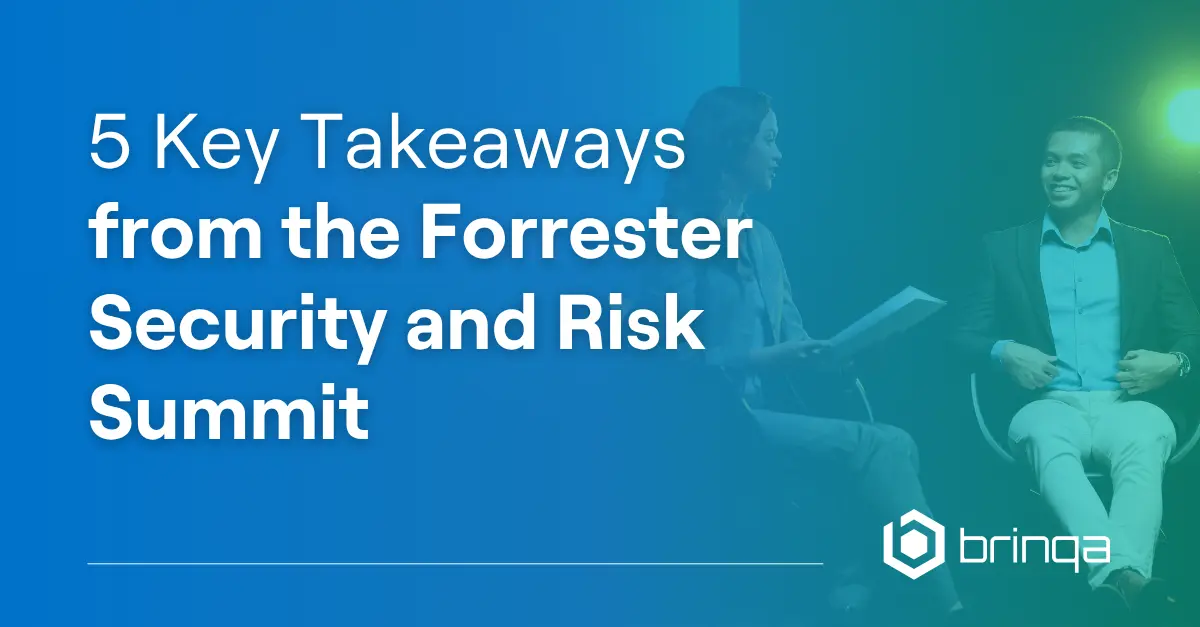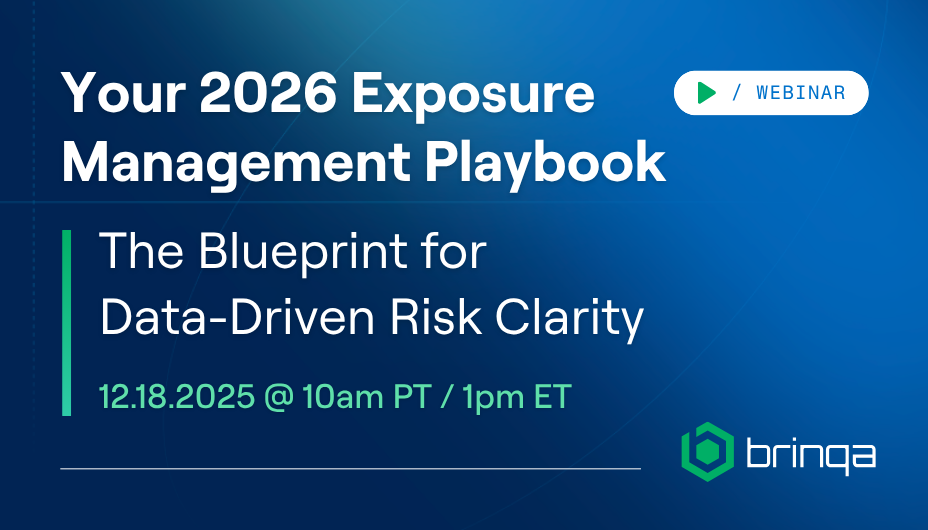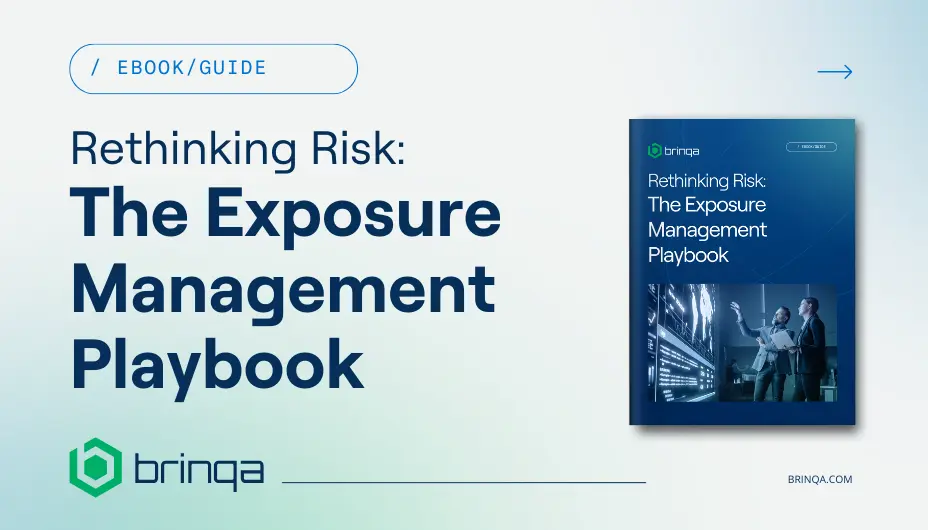5 Key Takeaways from the 2025 Forrester Security & Risk Summit
/8 min read/

If there is one clear message that came through at the 2025 Forrester Security & Risk Summit, it’s this: the ground is shifting quickly for CISOs and risk leaders. AI, automation, and exposure management are evolving faster than many organizations can adapt.
Across keynotes and sessions, speakers focused on control – how to manage what you can, prepare for what you can’t, and connect the dots between cyber risk, technology, and business outcomes. Below are five takeaways shaping the future of security, risk, and exposure management.
1. Rethinking Risk: Focus on What You Can Control
The opening keynote challenged security leaders to stop overcomplicating risk classification and focus instead on what is actionable. Forrester’s George Colony and Amy DeMartine outlined the “Three Es” of risk: enterprise, ecosystem, and external; a reminder that not all risks can be directly managed, but preparedness always can.
Throughout the Summit, analysts emphasized that modern risk management must be continuous and adaptive, not static. Organizations can no longer rely on one-time audits or qualitative heat maps. Instead, they need connected, data-driven systems that measure and respond to changes in real time.
In practice, this means moving from reactive frameworks to connected, data-informed programs that balance business growth with resilience. Security teams have been talking about this need for years, but today we can finally leverage AI and automation to make risk management more proactive and continuous, not episodic. That sets the stage for one of the Summit’s biggest themes: how AI is reshaping the speed, scale, and accuracy of modern cyber defense.
2. AI Is Both a Chaos Agent and a Catalyst
AI was a central theme at the Summit. Forrester Analyst described AI as a “chaos agent”, noting that attackers already use AI to accelerate reconnaissance and exploit development.
At the same time, responsible AI has the potential to transform defensive strategy. Analysts stressed that AI agents are not the same as simply invoking AI. They must be purpose-built and narrowly scoped so their output is accurate, explainable, and trustworthy. Specificity makes these agents more reliable and more effective.
Another key point: organizations need connective tissue between specialized agents, which serves as the orchestration layer that allows them to coordinate and share context. This is where agentic AI comes in. Instead of isolated AI tasks, agentic approaches allow multiple agents to collaborate and support complex cybersecurity workflows.
This aligns with Brinqa’s view of AI's role in cybersecurity: AI should enhance human expertise, not replace it. When built on strong governance and data integrity, AI becomes a catalyst for confident, timely decisions rather than a new source of noise or uncertainty.
3. Visibility, Prioritization, and Remediation Define Proactive Security
In his keynote, Forrester analyst Erik Nost highlighted three essentials of proactive security:
- Visibility, to understand the full breadth and depth of assets.
- Prioritization, to identify which exposures matter most.
- Remediation, to ensure coordinated action at the right time.
These principles were echoed by Jay Klauser, Brinqa’s SVP of Sales Engineering, in his presentation at the event. Jay outlined how enterprises operationalize exposure management using five core steps:
- See the whole picture by unifying data from multiple security and IT sources.
- Put risk in context so priorities reflect business impact, not just technical severity.
- Connect the dots across assets, findings, threats, and controls.
- Deliver the right fix to the right person with clear supporting evidence.
- Tell the story in business terms so risk decisions resonate with leadership.
Jay also shared how one of the world’s largest food and beverage manufacturers applied this framework to strengthen cyber risk operations. By enriching vulnerabilities with business and threat context and automating remediation workflows, the company significantly reduced mean time to remediation. It showed how organizations can move from reactive vulnerability management to proactive exposure management.
4. The Future of Risk Is Continuous and Dynamic
A consistent theme across the Summit was that risk is continuous, not static. Traditional “three lines of defense” models struggle to keep pace with rapid changes driven by AI adoption, regulatory updates, and expanding supply chain complexity.
Speakers emphasized the need for integrated, feedback-driven risk programs that connect data, decisions, and accountability across teams. This modern approach elevates the CISO from a gatekeeper to a strategic leader who continually balances innovation, security, and business value.
Forrester’s Predictions 2026: Cybersecurity and Risk reinforced this message. The report anticipates that investments in agentic AI and quantum-safe security will accelerate the need for adaptive controls and continuous visibility across environments. Organizations that embed these capabilities now will be better positioned for tomorrow’s risks — and opportunities.
5. Turning Risk into a Business Story
Another recurring question throughout the Summit: how do we communicate risk in ways that resonate with the business?
Forrester analysts and event speakers agreed that leadership conversations must shift from technical counts of vulnerabilities to measurable outcomes that show how reducing exposure protects operations, customers, and revenue.
In his session, Jay Klauser emphasized the importance of translating technical progress into business language – the final step in Brinqa’s Exposure Management Playbook. Metrics such as SLA performance, reduced MTTR, faster remediation cycles, and improved resilience help leaders understand the business value of security investments.
This mirrors a broader industry shift. Cybersecurity is evolving into a business function that requires shared ownership, transparent reporting, and alignment with organizational goals.
Bringing It All Together
The 2025 Forrester Security & Risk Summit highlighted that he future of risk management is not about reacting to vulnerabilities; it is about continuously managing exposure, aligning decisions with business context, and using AI and automation responsibly to accelerate progress.
For organizations ready to put these insights into action, Brinqa’s Exposure Management Playbook offers a practical, proven framework. It outlines how to unify data, prioritize effectively, connect findings, deliver action at scale, and communicate results in meaningful business terms.
Up Next: Your 2026 Exposure Management Playbook: The Blueprint for Data-Driven Risk Clarity.

Register now and join us for this expert-led session on industry forecasts, real-world case studies, and frameworks for building a data-driven exposure-management program that covers assets, identities and cloud.


